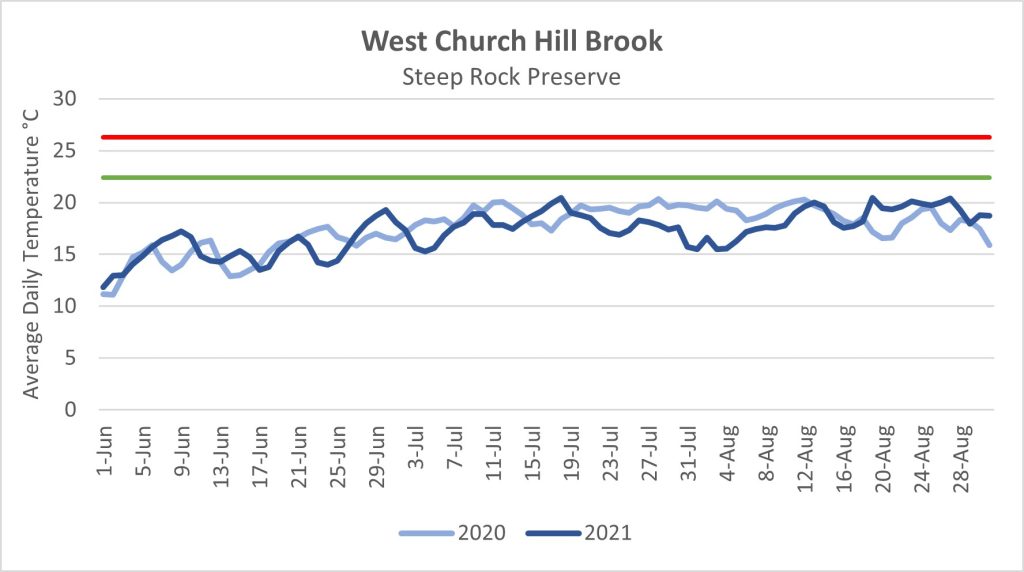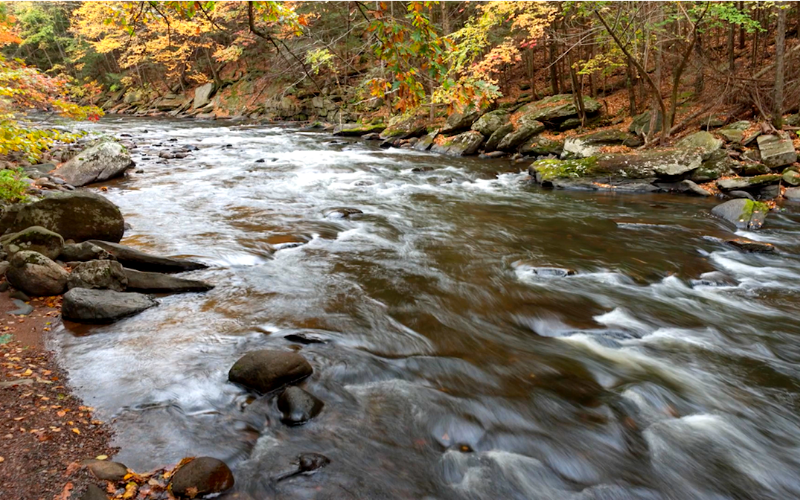In recognition of a rapidly shifting climate and increasingly pronounced weather events, Steep Rock Association (SRA) has proactively managed our preserves to enhance their climate resilience – the ability to resist and recover from climate-related disruptions.
The ecology of rivers and streams are particularly vulnerable, not only to prolonged droughts and severe floods, but also to slight changes in air temperature. These two critical habitat types support an abundance of native flora and fauna, many of which are dependent on cold water and are extremely sensitive to disturbance. SRA has executed several projects that protect these aquatic environments and their communities from climatic stressors.
In addition, SRA has implemented environmental monitoring regimes to build our preparedness as a conservation organization to effectively steward these precious and progressively threatened resources. Every year, we gather water temperature data to identify high-quality cold-water habitat, assess temporal trends and variability, and compliment biological studies to inform our management decisions.
The Connecticut Department of Energy and Environmental Protection have set a series of parameters defining thermal classification of water as cold, cool-transition, and warm. Through analysis of data collected every hour from June 1 – August 30, and ideally with datasets from multiple years, we can classify our streams and compare thermal dynamics to understand their relative quality and vulnerability as cold water habitat.

This chart depicts water temperatures in a Shepaug River tributary over the last two summers. One criteria for determining thermal classification is maximum daily mean. Here, we see that the maximum daily mean never exceeds 22.4°C (green line), one parameter identifying it as cold water. If temperatures rose above 22.4°C but below 26.3°C, the stream would meet cool-transition classification. A maximum daily mean during summer months exceeding 26.3°C (red line) would be considered warm water. The two other parameters for determining a stream’s thermal class are mean temperature throughout the entire summer and mean temperature just for the month of July.
In 2020, SRA’s Van Sinderen Conservation Interns Matt Marchese and Jack Roush completed a capstone project investigating the thermal attributes of the Shepaug River and streams flowing through SRA preserves. The report provides more about thermal classification, the state of our waters, thermal refuges, and the implications of climate change on these freshwater environments.

